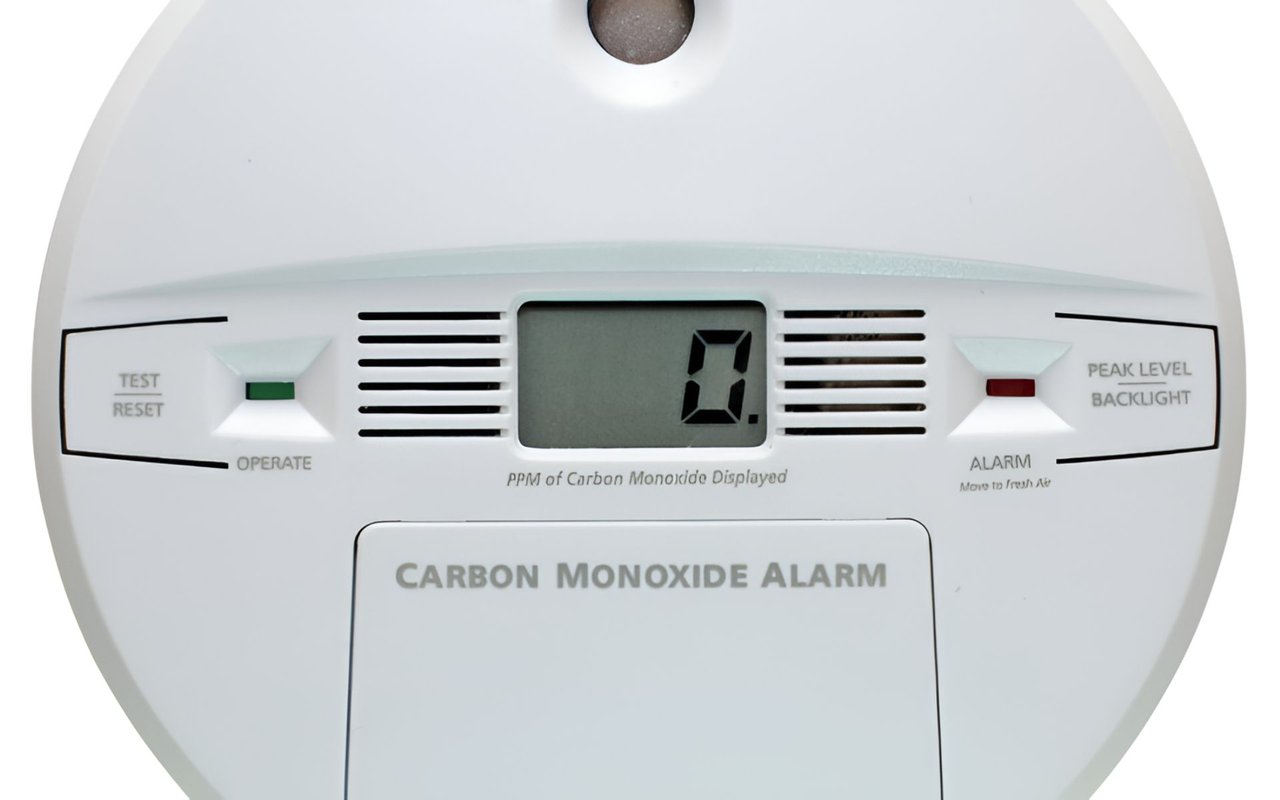To protect the privacy of the individuals involved the names, location and details of A recent case in which a young couple died from carbon monoxide poisoning have been changed.
I’m posting this sad story to highlight the importance of doing your due diligence. While you probably will not have a choice in the appraiser selected for your real estate purchase you do have a choice in the home inspector you use. Don’t cut costs when it comes to hiring a home inspector. Does it make sense to save $100-$200 on an inspection? Your more experienced, successful and on the ball inspectors will cost more. You have so much on the line both financially and with your health and safety. It’s also highly recommended that home owners verify what was in the inspection report. Are there CO detectors where they are said to be? Do the batteries work?
A recent case in which a young couple died from carbon monoxide poisoning while they slept highlights the life and death importance of these simple alarms. This case has put this issue front and center for the real estate appraiser and home inspector communities as a whole.
Here’s what happened.
An Easy Mistake To Make
Frank and Debbie Williams (names changed for privacy) were young first-time homeowners. Living in their home for just over 18 months. The couple had plans for a night out with friends later in the evening.
In a rush to get in her husband’s car, Debbie left her car in the garage. Key in the ignition and still idling. When the couple returned from dinner, Frank parked his car outside on the driveway. They went to bed in their 3rd floor bedroom.
Meanwhile Debbie’s car sat idling, exhausting carbon monoxide into the garage and home.
This resulted with the Williams’s, along with their pets, being found dead the next day. Debbie’s car was still running in the garage when police arrived on the scene. Lab tests confirmed the cause of death for both Frank and Debbie was “Carbon Monoxide Toxicity.”
Detectives found five hard-wired alarms in the ceiling throughout the townhouse but all were actually smoke detectors. Not one carbon monoxide alarm was found in the home.
As you can expect the news of the young couple losing their lives hit the community hard.
Lawsuit
As you might expect, Frank and Debbie’s parents hired a law firm. They started going after all the real estate professionals involved.
After investigation, both the appraiser and the home inspector had each independently inspected the home 18 months prior. They both mistakenly reported a few of the smoke alarms present at the home, as CO detectors.
What do you think happened? Well, both the appraiser and home inspector received a “wrongful death” legal claim.
The legal team for the parents claimed that the appraiser and inspector had negligently appraised the Williamses home. They each had reported the presence of a CO detector when in fact, none were present. Unfortunately both the inspector and appraiser labeled their pictures inaccurately in the inspection and appraisal reports.
The legal demand notes that the appraiser indicated they would note any physical conditions that could affect livability and adverse environmental conditions. Furthermore, the appraiser represented that their photographs were a “true and accurate representation of the subject property”. The appraiser acknowledged that any intentional or negligent misrepresentations could result in civil liability.
Evidence
The plaintiff’s attorneys point to a photograph included in the appraiser’s and the inspector’s report. A picture of a First Alert smoke detector on the ceiling of the townhouse. However, the smoke detector was incorrectly labeled as a CO detector rather than a smoke alarm in both reports. The legal demand is quick to assert that the appraiser and inspector were negligent, stating: “Given its orientation, next to a ceiling light and adjacent to a staircase, the device depicted appears to be on the second floor near the staircase to the third floor, where the bedrooms are located. It would not have been properly located even if it was an actual CO alarm.” Their argument is clearly that any well-focused appraiser/inspector would have known this fact, and should be able to easily tell the difference between the two.
Inside Info
The plaintiff’s attorney reviewed the matter of potential negligence by interviewing other appraisers, “Apparently, the [lender], as do many other lenders, specifically requires that the appraiser confirm the presence of a statutorily required CO alarm as a condition for approving the loan. One appraiser advised me that he has had to return to a property to provide that confirmation,” the attorney wrote. However, this appraiser and inspector did not properly confirm the presence of a CO alarm.
It was further argued by the legal team that the lender “obviously relied upon the appraisal report in approving the loan. Had there been no CO alarm present, the loan would not have been approved unless and until a CO alarm was provided (which could have been readily accomplished).”
The attorneys go as far to argue that the law requiring carbon monoxide detectors in homes was increasingly necessary because “newer motor vehicles run quieter and smoother” and the “technological advances have lessened the required interaction and sensory feedback between operator and vehicle in driving and parking.”
The combination of these items gave the plaintiffs’ attorneys a strong claim against both the appraiser and the home inspector that they had incorrectly reported the presence of a CO detector (which never actually existed), and consequently that this negligent misrepresentation contributed to the wrongful death of the Williamses.
Ultimately, both cases were settled privately out of court.
Is It A CO Detector Or A Smoke Alarm?
It can be extremely difficult to tell the difference between CO detectors and smoke alarms. This is a reminder to appraisers and inspectors to take a second look at all CO detectors and smoke alarms—and to test them as well.
Here are some tips to tell the difference between the two detectors.
First of all, the difference between a smoke alarm and a CO detector is quite simple. These detectors will be labeled on the exterior shell of the units so it is easy to see. Sometimes this can be hard to read because the signage could be the same color as the shell, so it’s incredibly important for you to get close enough to the alarm or CO detector to read it clearly (use a flashlight!) and test it.
Carbons can be mounted high or low (I think most people are under the impression CO detectors are always mounted low on a wall). Carbon monoxide and oxygen have only one molecule difference, they basically have the same density. Theoretically you could place a CO detector at any height.
Another tip is to check the date of a CO alarm and smoke detector. It’s alarming how many smoke alarms and CO detectors I find from the ’80s. Carbon monoxide alarms expire after six years, and smoke alarms expire after 10. The National Fire Protection Association (NFPA) requires smoke alarms to be replaced after 10 years. Appraisers, home inspectors and homeowners should be checking these dates.
This is what Washington State requires
Washington State law (WAC 51-51-0315) now requires UL 2034 approved carbon monoxide alarms in ALL homes and condominiums being sold in Washington State. The location should be: at least one alarm outside of all sleeping areas and one on each floor of the house. Best practices are to have these alarms hardwired with a battery back-up – though requirements are for the installation to meet manufacturer’s specifications. Carbon monoxide is a colorless, odorless gas that can cause sickness, nausea and even death. Alarms have a useful service life of roughly 6 years, so changing them more frequently than smoke alarms is recommended.
Final Thoughts
While verifying the presence and operation of carbon monoxide detectors is a very small part of a property inspection, it is of utmost importance. In this case, both the appraiser and the home inspector cut corners, improperly called the smoke alarm a carbon monoxide detector, and as a consequence became entangled in a nasty wrongful death legal claim.
Stay safe out there!




